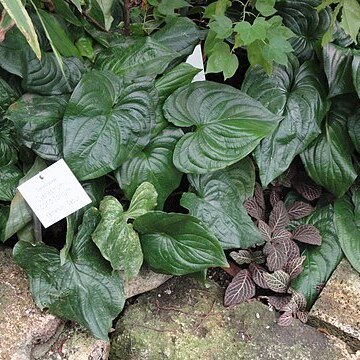Corms several superposed one above the other, ± depressed, with a solitary leaf (rarely more) and a scape produced independently on the upper surface, the petiole and scape sheathed at the base by different cataphylls; cataphylls surrounding the petiole 1-several, shortest outside; cataphyll surrounding the scape usually 1 at the base.
Leaf basal, petiolate; lamina cordate at the base, usually with conspicuous basal lobes, or at least abruptly constricted at the base; petiole ± distinct and equalling or exceeding the midrib in length.
Seeds ovoid; testa with a pitted chalazal end and a smooth micropylar end, without microprickles in pits, without endosperm, with a large chalazosperm occupying about half the seed.
Inflorescencescapose with flowers racemosely arranged; bracts absent, or present and subulate to foliaceous; pedicel with or without a bracteole.
Capsule with only one or occasionally 2 carpels developing a seed; fertile carpels globose, dehiscing by a complete longitudinal split.
Tepals blue, sometimes with a lilac tinge, fused into a short tube at the base.
Pollen grains with an imperforate rugulose to granular tectum.
Anther thecae oblong to linear, dehiscing by a terminal pore.
Ovary 3-locular, semi-inferior; ovules 2 per carpel.
Perennial herbs, acaulescent.

